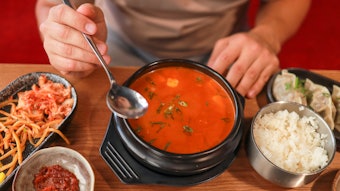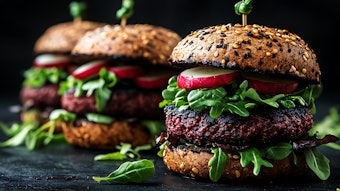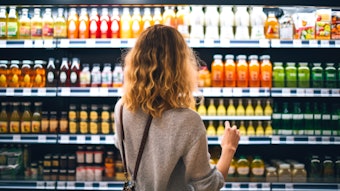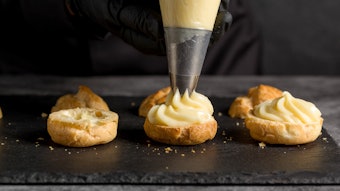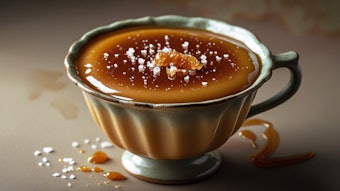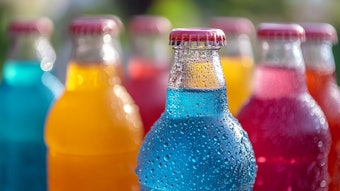The ability to accurately predict which flavors will appeal to consumers is critical to food and beverage manufacturers around the world. Flavor is a key determinant of whether their products have the “wow!” appeal, or a distinctive edge over their nearest competitors, which in turn helps to influence repeat purchase by consumers.
Traditionally, consumer testing of products for flavor preference has involved an upper limit of six or seven product samples per session. A number of factors prevent the use of larger samples: when products are tasted by panelists, there is a limit to how many different samples can be ingested at one sitting before satiety occurs. Sensory fatigue and carry-over effects in the mouth are other problems that occur when tasting multiple product samples. These constraints mean that traditionally, the flavorist has been obliged to narrow down the possible flavor options from the outset, by pre-selecting a limited number of choices that can be evaluated by target consumers.
Technology Increases Speed to Market
Increasing the range and variety of samples using traditional approaches has been a costly and time-consuming option. However, by using unique flavor creation tools such as Givaudan’s Virtual Aroma Synthesizer (VAS), these procedural limitations can be overcome. The VAS is an aroma delivery device that combines human perception (sense of smell) with precise instrumentation. It allows for controlled aroma generation to effectively blend complex mixtures of flavor ingredients into a single aroma profile.
VAS technology overcomes the constraints of satiety, since no food or drink samples are actually ingested. Also, cleansing the nasal palate is more straightforward than refreshing the mouth palate, often requiring little more than smelling a neutral stimulus like clean air or coffee beans. Years of research have shown that a typical consumer can evaluate between four and ten times the number of samples through aroma sensing than can be evaluated by mouth (between 30 and 40 are not unusual). This means that more shades and subtleties of flavor can be evaluated in a single session, giving food and beverage manufacturers the ability to explore larger regions of the flavor space at a comparatively lower cost.
Extensive studies have shown aroma to be an accurate predictor of taste preference. Tests have demonstrated that consumers’ preference for a particular taste tends to mirror their liking or disliking of its aroma. Moreover, the perceptual differences that exist between the smell and taste of a product can be addressed by an experienced flavorist, particularly when the expert’s judgment is supported by flavor modeling tools.
Encouraging Customer Involvement
Givaudan’s mini-Virtual Aroma Synthesizer (mini-VAS) is the portable version of the VAS, which is used on the company’s TasteTrek programs (exploratory field research exercises) and also on customer sites.
The mini-VAS contains 30 cartridges, each about 12 cm long and lined with absorbent material. Small amounts of flavor ingredients are placed inside these cartridges. Air is passed down a central chamber of the mini-VAS and the flow of air through the cartridges can be adjusted in any chosen combination via a connected laptop computer, to effectively recreate the different individual aromas with great accuracy. The aromatic air is blown out of the mini-VAS through a tube and is smelt by the flavorist or customer via a nose cup. This technology-supported rapid sampling process forms the basis for translating a preferred aroma profile into a flavor formulation for a final consumer product.
Combining Experience with Cutting-edge Innovation
Linking flavor optimization tools with known target consumer preferences derived from quantitative research studies can be of significant benefit to food and drink manufacturers. In particular, this approach can help to provide an accurate prediction of those flavor formulations that are likely to be successful in a given consumer market, using geographical and /or demographic criteria.
Flavorists can rapidly address new product formulation requirements based on knowledge generated from flavor studies. Sensory profiling is used to identify an initial consumer target area, then VAS is used to explore the subtle diversity of flavors available to the product developer within that target area. This approach offers considerable advantages in terms of both speed and flavor differentiation. By combining its accumulated sensory experience base and proprietary technologies, this system offers food and drink manufacturers an efficient and creative approach to testing and validating consumer winning flavor concepts.
Chicken Case Study
Givaudan recently worked with a customer in Latin America on a product reformulation project to develop a new, cost-effective chicken flavor for soups. Here, the mini-VAS was used to evaluate the performance of several new high impact natural flavors that were selected to ensure maximum authenticity in the chicken flavor profile. The company’s PureDelivery encapsulation technology further helped the delicate flavors withstand a rigorous food manufacturing environment, while improving flavor stability and retention, aroma release and helping to extend the product’s shelf life.
